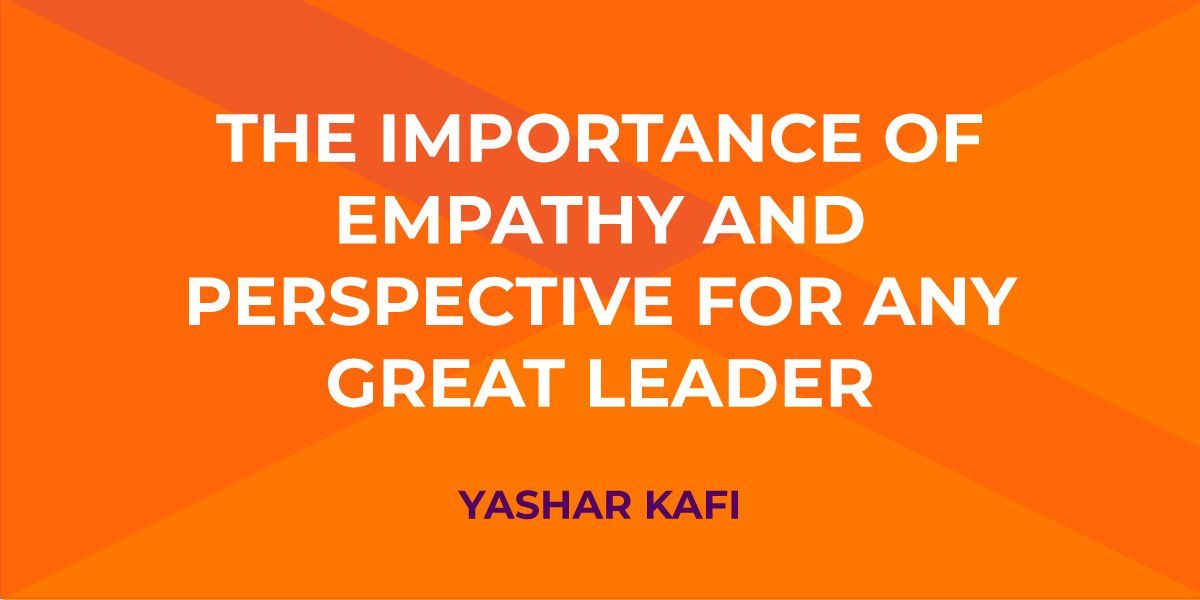The Importance of Empathy and Perspective For Any Great Leader
Do you ever find yourself dealing with conflicts at work? “He said this; she said that” arguing, to be frank, you’d expect from a four-year-old in a disagreement over who uses which color Lego blocks. I’ve dealt with a fair few of these debacles in the past, and, thinking back, I always found myself wondering one thing:
“Why does he or she act that way?”
That, my friends, is the magical and—sometimes—mythical “empathy” coming to the fore. It’s the natural inclination to understand the aggrieved or even the aggressor on an emotional level before rectifying the situation. It’s something that many people can’t quite manage. Still, it is imperative that leaders empathize with their employees and actively attempt to walk a mile in their shoes before going dictatorial.
Addendum: You should avoid “going dictatorial” in general, by the way.
Empathy and Perspective
As Simon Sinek, the renowned mentor and inspirational speaker states, “great leaders have empathy and perspective.” This is an undeniable fact. Often, people allow their egos to get in the way and get lost in the rigmarole of status and authority within the workplace, rather than focusing on what matters: people. It just so happens to be the case that you grow increasingly dependent on the human resources at your disposal as you promote your way up an organization. Yet, so many managers neglect the needs of their employees and care little for them.
“Leadership is not about being in charge. Leadership is about taking care of those in your charge.”
Simon Sinek
Invariably, you will grow within any organization that you work for or with during your career. Gradually, we get better at our jobs, and we begin to hone our expertise, until we eventually become akin to a “specialist” in our field, in the latter days of our journey. Over the years, you’ll enjoy promotions and growth of reputation within your industry, and, in many cases, there’ll be a comfortable managerial role at the end of the tunnel.
Sinek makes a very poignant point about this norm, though: The difference between managers and leaders is that managers manage the work, while leaders manage the people.
Leaders Create Thriving Environments
Sinek compares leaders to parents, who should always be looking to create an enjoyable, safe environment where everybody gets to develop their skillset like you would for your own children.
You know, I’ve said it before, and I’ll repeat it: I might not be the smartest, but I will try my hardest to be the very best at what I do. That doesn’t mean I can do everything, though. Happy, collaborative working environments, provided by real leadership, allow me and others like me to exceed in our development, without the oppressive thumb of an egotistical manager. Why? Because they give people the breathing space to develop, to some extent, at their own pace, with all of the encouragement and support they need from the leadership teams.
Now, there’s one key ingredient in creating a great environment and workplace culture: Empathy.
Empathy and Great Workplace Environments Coincide
That healthy mindset across the workplace comes from one place and one place only—a hierarchy that wants the best for their staff. Ergo, empathetic managers, who are, incidentally, leaders. Sinek suggests that without compassionate leaders and organizations are unable to create environments where employees feel safe and fully trust one another because, in an empathy-lacking world, the problems and difficulties we all face in our day to day lives are ignored and categorized as separate to our work-life. As a result, the demands of the workplace are expected, regardless of your personal circumstances, and employees feel far less inspired to try their very best for that organization.
In many ways, empathy acts as the invisible glue that keeps workplaces and workforces harmoniously ticking, without anybody ever really noticing. It’s only when leaders lack empathy that staff realizes its importance, but by that point, it’s too little, too late.




